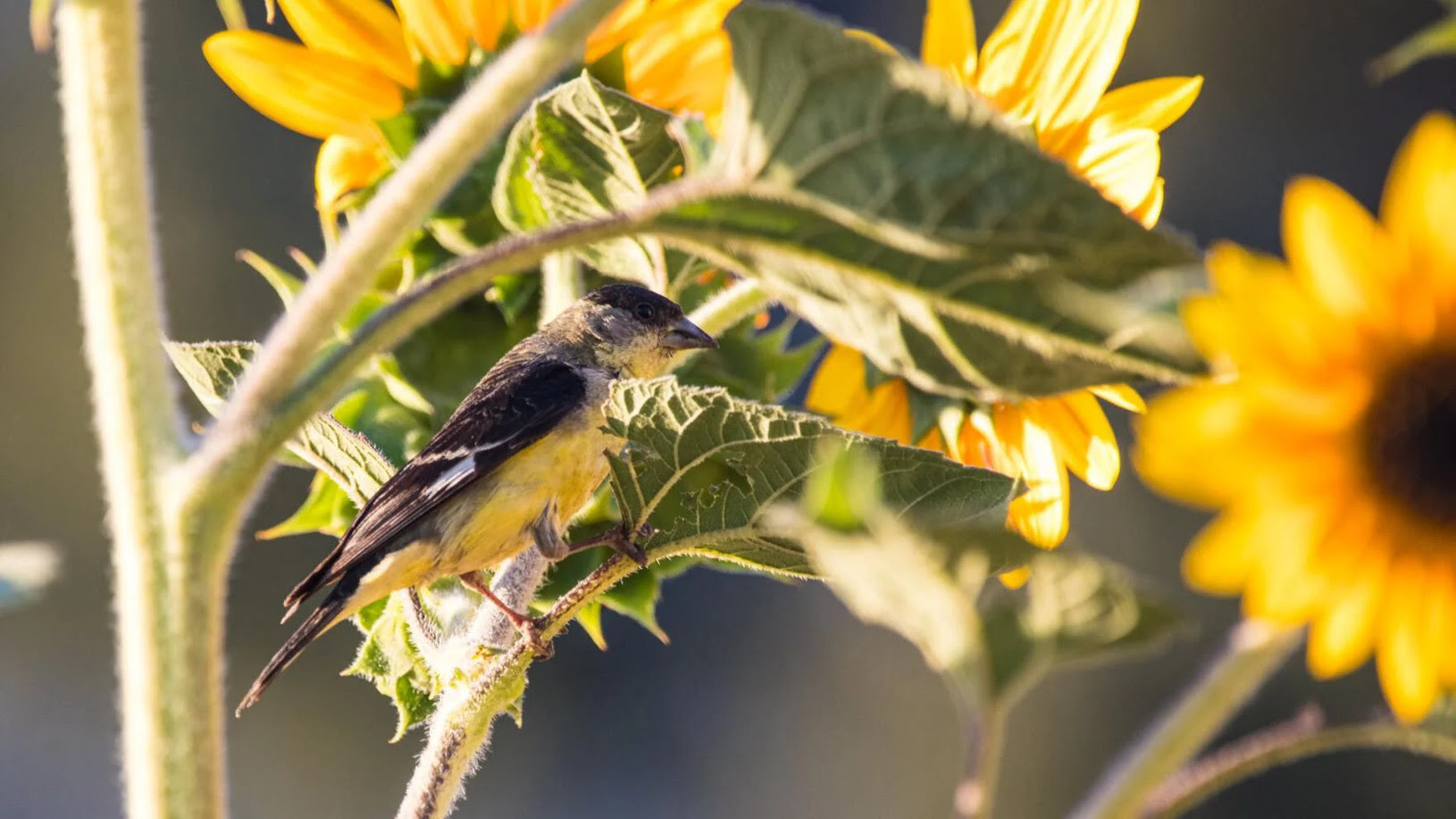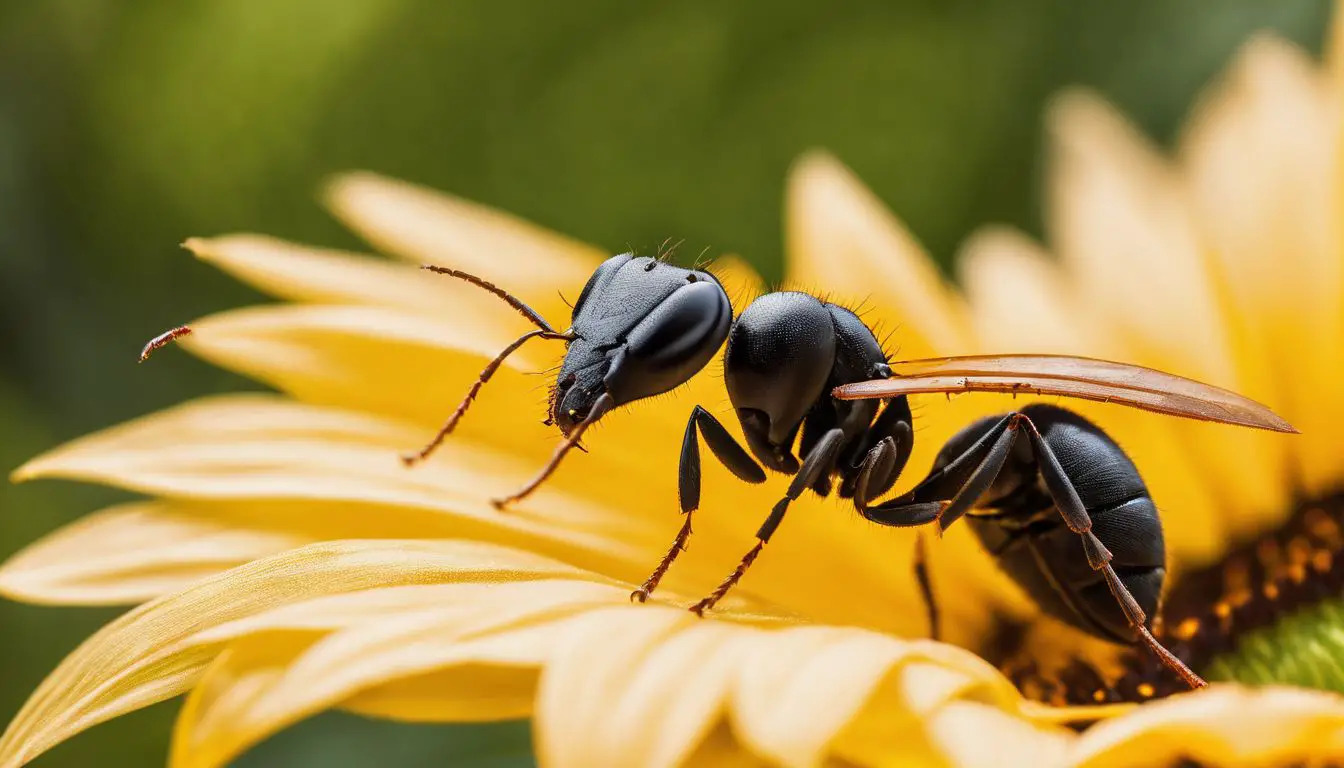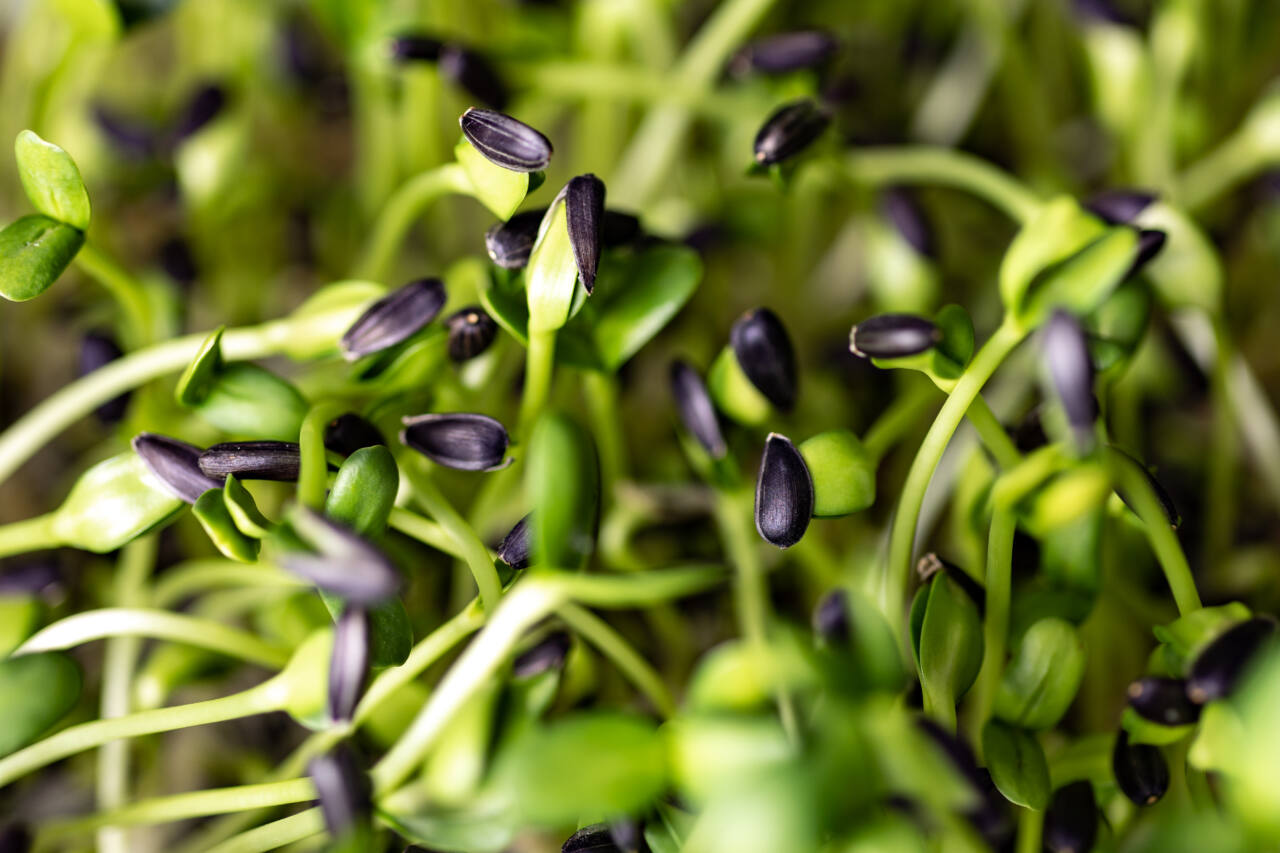Home>Gardening News and Trends>Latest News>What Is The Scientific Name For Sunflowers


Latest News
What Is The Scientific Name For Sunflowers
Modified: January 22, 2024
Discover the Latest News on Sunflowers and their Scientific Name. Stay informed with the most up-to-date information in the world of botany and plant science.
(Many of the links in this article redirect to a specific reviewed product. Your purchase of these products through affiliate links helps to generate commission for Chicagolandgardening.com, at no extra cost. Learn more)
Table of Contents
Introduction
Sunflowers are vibrant and iconic flowers that are instantly recognizable. Known for their large, bright yellow petals and distinctive seed heads, sunflowers have captured the imagination and admiration of people around the world. However, beyond their striking appearance, sunflowers also have a rich scientific background that defines their botanical classification.
Exploring the scientific aspects of sunflowers can provide us with a deeper understanding of these fascinating plants. From their genetic name to their taxonomic hierarchy, there is much to uncover about the scientific classification of sunflowers.
In this article, we will delve into the botanical classification and scientific name of sunflowers, shedding light on the various aspects of their taxonomy and nomenclature. By delving into the science behind sunflowers, we can gain a greater appreciation for these beloved flowers.
So, let’s embark on a journey through the world of sunflower taxonomy and discover the scientific intricacies that define these beautiful plants.
The Botanical Classification of Sunflowers
To understand the botanical classification of sunflowers, we must first look at their scientific name, which is derived from their genetic characteristics. The scientific name for sunflowers is Helianthus annuus.
Helianthus is the genus name, while annuus is the species name. The genus name is a broad classification that groups together closely related species, while the species name identifies a specific type of sunflower.
The genus name, Helianthus, is derived from the Greek words “helios” meaning sun, and “anthos” meaning flower. This is fitting, as sunflowers are often associated with the sun due to their heliotropic nature – the tendency to follow the sun’s movement throughout the day.
As for the species name, annuus means “annual” in Latin, indicating that sunflowers are typically grown as annual plants, completing their life cycle within a single year.
It is important to note that the scientific name of sunflowers is written in italics, with the genus name capitalized and the species name in lowercase, and both names are followed by the author’s name who first described the species.
The botanical classification of sunflowers goes beyond the genus and species names. Sunflowers belong to the plant family Asteraceae, commonly known as the aster family or daisy family. This family is one of the largest plant families, encompassing a wide range of flowering plants.
Within the family Asteraceae, sunflowers fall into the tribe Heliantheae. This tribe contains many other sunflower-like plants and is known for its diverse array of species within the family. Sunflowers are further classified into the subtribe Helianthinae, which includes other closely related genera.
Understanding the botanical classification of sunflowers provides a foundation for studying their genetic relationships and evolutionary history. This classification allows scientists and botanists to organize and categorize different species, facilitating research and conservation efforts.
Now that we have explored the botanical classification of sunflowers, let’s take a closer look at the genetic name and taxonomic hierarchy of these remarkable plants.
The Genetic Name for Sunflowers
The genetic name for sunflowers, Helianthus annuus, provides valuable insights into the origin and characteristics of these plants. Helianthus, derived from the Greek words “helios” meaning sun, and “anthos” meaning flower, aptly describes the sun-loving nature of these vibrant blooms.
When examining the genetic name of sunflowers, it’s important to understand that it follows the binomial nomenclature system developed by Carl Linnaeus in the 18th century. This system assigns each species a unique, two-part name that consists of the genus and species names.
The genus name, Helianthus, denotes a group of closely related species within the same family. In this case, Helianthus encompasses various sunflower species that share similar genetic traits and physical characteristics. The genus name acts as a broader category that covers a range of related plants.
On the other hand, the species name, annuus, specifically identifies the sunflower species known for its annual growth cycle. The name annuus, derived from the Latin word for “annual,” highlights the fact that sunflowers complete their life cycle in a single growing season.
In the context of genetic names, it’s important to note that they are italicized when written in scientific literature or formal documents. Additionally, the genus name is capitalized while the species name is written in lowercase. The nomenclature is typically followed by the name of the person who first described the species, which in the case of sunflowers is usually Linnaeus himself.
The genetic name, Helianthus annuus, not only reveals the scientific classification of sunflowers but also provides a deeper understanding of their genetic makeup and evolutionary relationships. Through genetic analysis and comparison, scientists can uncover the similarities and differences between various sunflower species, shedding light on their evolutionary history and genetic traits.
By studying the genetic name of sunflowers, researchers can gain insights into the mechanisms that drive growth, development, and adaptation in these remarkable plants. This knowledge has practical applications in agriculture, as it can inform breeding programs and crop improvement efforts.
Now that we have explored the genetic name for sunflowers, let’s delve into the taxonomic hierarchy that further classifies and organizes these beloved flowers.
Taxonomic Hierarchy of Sunflowers
The taxonomic hierarchy is a system used to classify and organize living organisms into various levels of classification based on their evolutionary relationships. For sunflowers, this hierarchy provides a structured framework that helps scientists understand their place in the natural world.
Starting from the broadest level, the taxonomic hierarchy of sunflowers begins with the domain Eukarya, which encompasses all organisms with eukaryotic cells. Sunflowers, like all plants, belong to the domain Eukarya.
Within the domain Eukarya, sunflowers fall into the kingdom Plantae, which includes all plants. This kingdom represents a major group of multicellular, photosynthetic organisms that play a crucial role in sustaining life on Earth.
Further down the taxonomic hierarchy, sunflowers belong to the division Magnoliophyta, commonly known as the flowering plants or angiosperms. This division contains the largest group of plants and comprises approximately 90% of all known plant species.
Within the division Magnoliophyta, sunflowers are classified under the class Magnoliopsida, which includes a wide range of flowering plants with diverse characteristics and traits.
Next, sunflowers are categorized under the order Asterales, which is a group of flowering plants that includes asters, daisies, and sunflowers. This order is known for its composite flower heads made up of numerous small individual flowers.
Sunflowers are then classified under the family Asteraceae, also referred to as the aster family or daisy family. This family is one of the largest plant families and includes a wide variety of flowering plants with composite flower heads.
Within the family Asteraceae, sunflowers belong to the tribe Heliantheae. This tribe contains several genera of sunflower-like plants, which share common characteristics and evolutionary relationships.
Lastly, sunflowers are classified under the genus Helianthus, which represents a group of closely related species within the family Asteraceae. This genus encompasses various types of sunflowers, each with its own unique characteristics and traits.
The taxonomic hierarchy of sunflowers provides scientists with a systematic framework to study and understand the relationships between different species. By organizing plants into various taxonomic levels, researchers can identify patterns, uncover evolutionary history, and make meaningful comparisons across different species.
Now that we have explored the taxonomic hierarchy of sunflowers, let’s move on to examining their family and genus names in more detail.
Sunflowers’ Family and Genus Names
Sunflowers belong to the family Asteraceae and the genus Helianthus. The family and genus names play a crucial role in organizing and categorizing sunflowers within the broader classification of plants.
The family Asteraceae, commonly known as the aster family or daisy family, is one of the largest plant families, comprising over 23,000 recognized species. This diverse family includes a wide range of flowering plants with composite flower heads, where each flower head is composed of multiple individual flowers.
Asteraceae is known for its unique flower structure, consisting of disk florets and ray florets. The disk florets are tubular-shaped and located at the center of the flower head, while the ray florets are usually strap-shaped and arranged around the perimeter, giving sunflowers their distinctive appearance.
Within the family Asteraceae, sunflowers specifically belong to the genus Helianthus. The genus name, Helianthus, comes from the Greek words “helios,” meaning sun, and “anthos,” meaning flower. This name perfectly encapsulates the sun-loving nature and striking appearance of these beautiful plants.
The genus Helianthus includes several species of sunflowers, each with its own unique characteristics and growth habits. Sunflowers are known for their large, showy flower heads and their ability to track the movement of the sun, a behavior known as heliotropism.
One of the most well-known species within the genus Helianthus is Helianthus annuus, or the common sunflower. This species is widely cultivated for its edible seeds and its ornamental value, brightening gardens and landscapes with its vibrant yellow petals.
The family and genus names provide valuable information about the relationship between sunflowers and other plant species. By identifying the family Asteraceae, scientists can gain insights into the evolutionary history and characteristics shared by sunflowers and other members of this diverse plant family.
Similarly, the genus Helianthus helps categorize and distinguish sunflowers from other related genera within the family Asteraceae. It allows scientists to study the unique traits, genetic relationships, and ecological roles of various sunflower species.
Understanding the family and genus names of sunflowers is not only crucial for scientific research and classification but also for enthusiasts and gardeners who appreciate and cultivate these stunning flowers. By recognizing their place within the Asteraceae family and the Helianthus genus, we can better appreciate the beauty and diversity of sunflowers.
Now that we have explored the family and genus names of sunflowers, let’s delve into the common and vernacular names that are used to refer to these beloved flowers.
Common and Vernacular Names for Sunflowers
Sunflowers, known by their scientific name Helianthus, have various common and vernacular names that reflect their popularity and widespread cultivation. These names vary across different languages and cultures, but they all point to the recognizable and unique characteristics of these vibrant flowers.
One of the most commonly used names is, of course, “sunflower.” This name stems from the plant’s iconic behavior of turning its face to follow the sun throughout the day. The term “sunflower” perfectly captures the connection between these blooms and their appreciation for sunlight.
In many languages, sunflowers are referred to by names that translate to “sunflower” or have similar connotations. For example, in Spanish, they are called “girasol,” which combines the words “girar” meaning “to turn” and “sol” meaning “sun.” Similarly, in French, they are known as “tournesol,” derived from the words “tourner” meaning “to turn” and “soleil” meaning “sun.”
Other vernacular names for sunflowers highlight their physical appearance and characteristics. For instance, in some regions, they are called “helianto” or “corona del sol” in reference to their sun-like appearance. In certain cultures, sunflowers are associated with positivity and happiness, leading to names such as “happy flower” or “joyful flower.”
Sunflowers also go by different names based on their specific varieties or uses. Some examples include “Mammoth sunflowers” for the tall and large-headed varieties, “Teddy Bear sunflowers” for the dwarf and fluffy varieties, and “Russian sunflowers” for the species historically cultivated in Russia.
The common and vernacular names for sunflowers reflect their cultural importance and the admiration people have for these bright and cheerful blooms. Whether referring to their connection with the sun, their physical appearance, or their positive symbolism, these names capture the essence of sunflowers in different languages and regions.
Understanding the common and vernacular names for sunflowers helps facilitate communication and appreciation across language barriers. It also showcases the widespread recognition and popularity of these flowers, which have earned a special place in horticulture, art, and culture worldwide.
Regardless of the name used, one thing remains consistent: sunflowers are universally adored for their vibrant beauty and uplifting presence. These charming blooms bring joy and warmth wherever they are found, carrying the spirit of the sun in their petals.
Now that we have explored the common and vernacular names of sunflowers, let’s reflect on what we have learned about these captivating flowers.
Conclusion
The world of sunflowers is not just about their captivating beauty but also about their scientific classification and nomenclature. Understanding the botanical classification of sunflowers provides us with a deeper appreciation for these remarkable plants.
We have explored the botanical classification of sunflowers, starting with their scientific name, Helianthus annuus. We learned that Helianthus is the genus name, while annuus denotes the species name, highlighting their annual growth cycle.
Delving deeper into the taxonomic hierarchy, we discovered that sunflowers belong to the family Asteraceae, the order Asterales, and the division Magnoliophyta. The genus Helianthus falls within the tribe Heliantheae in the aster family.
Furthermore, we explored the significance of the family and genus names. Sunflowers belong to the large and diverse Asteraceae family, known for its composite flower heads. The genus Helianthus encompasses various species of sunflowers, each with its own unique traits and characteristics.
We also dived into the common and vernacular names for sunflowers, ranging from “sunflower” to names derived from their appearance, characteristics, or cultural significance. These names highlight the widespread popularity and admiration for sunflowers across different languages and cultures.
Understanding the scientific and common names of sunflowers enriches our knowledge of these extraordinary plants. It allows us to appreciate their genetic makeup, their place in the plant kingdom, and the cultural connections they have established throughout history.
As we conclude our exploration of sunflowers’ scientific name, classification, and vernacular names, let us remember the significance of these floral wonders. Sunflowers, with their radiant petals and captivating presence, continue to inspire and bring joy to people around the world.
So, the next time you spot a sunflower, take a moment to admire its beauty and reflect on the scientific intricacies that underlie its simple yet remarkable existence. Sunflowers truly exemplify the marvels of nature and the endless wonders that botanical classification can reveal.










